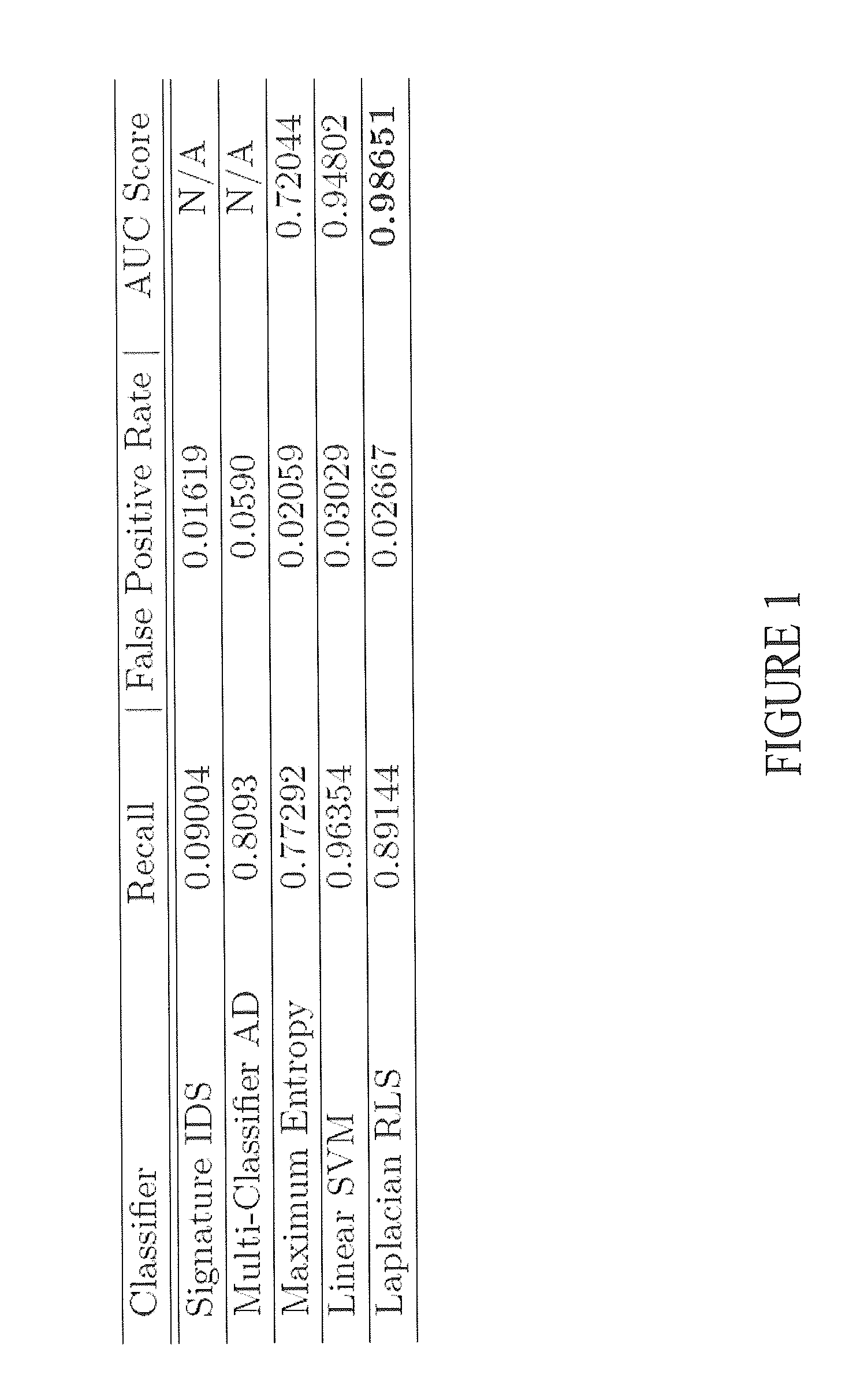In-situ trainable intrusion detection system
a technology of intrusion detection system and intrusion detection method, which is applied in the security field, can solve the problems of ineffective prior art computer based intrusion detection system, high number of false positive alerts, and difficulty in identifying particular traffic patterns that are common to intrusions
- Summary
- Abstract
- Description
- Claims
- Application Information
AI Technical Summary
Benefits of technology
Problems solved by technology
Method used
Image
Examples
Embodiment Construction
[0012]To protect computer networks and machines from unauthorized intrusions, the disclosed devices and methods provide alerts when an exploit is detected. The disclosed Intrusion Detection Systems and Methods (IDSs) require few training samples and can be trained in a cost-effective manner in-place (i.e., in-situ) and in real-time on a new or existing publicly accessible or private network. The IDSs may detect previously unidentified attacks (which are not detected by signature or anomaly based IDSs) while generating fewer false positive alerts than signature and anomaly based IDS systems. This is an improvement over the prior art since signature based IDSs only key on known attacks and prior-art anomaly detection or heuristic sensors suffer from false positive rates that are significantly higher than those of signature-based systems. With this capability, the disclosed IDS may be incorporated or comprise a machine-learning sensor in-situ (meaning where it will be deployed) and som...
PUM
 Login to View More
Login to View More Abstract
Description
Claims
Application Information
 Login to View More
Login to View More - R&D
- Intellectual Property
- Life Sciences
- Materials
- Tech Scout
- Unparalleled Data Quality
- Higher Quality Content
- 60% Fewer Hallucinations
Browse by: Latest US Patents, China's latest patents, Technical Efficacy Thesaurus, Application Domain, Technology Topic, Popular Technical Reports.
© 2025 PatSnap. All rights reserved.Legal|Privacy policy|Modern Slavery Act Transparency Statement|Sitemap|About US| Contact US: help@patsnap.com



